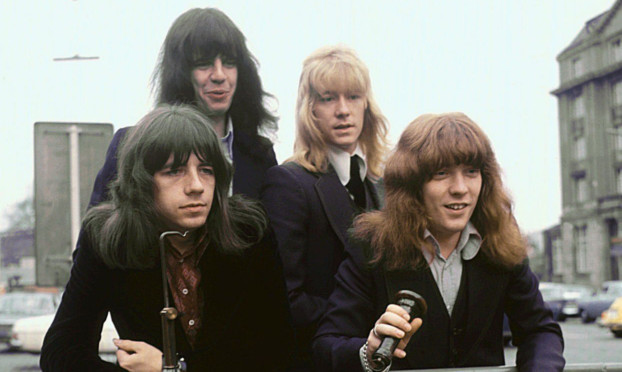
BEING a British pop star in the 1970s had its problems but for one straightforward bloke from Wrexham, having to wear make-up wasn’t one of them, writes Craig Campbell.
Andy Scott played all those famous guitar parts on The Sweet’s many hits, selling over 55 million records including an astonishing 34 No 1s across the world.
While David Bowie might have thought lipgloss and eyeliner made him attractive, Andy and Sweet bassist Steve Priest joked that it made them look like the Ugly Sisters!
“That was how we looked at it!” laughs Andy, who is 63 now and still going strong.
“Obviously, we didn’t go down the pub after Top Of The Pops with the make-up still on, although we did once have to get on a flight wearing it there had been such a rush, we got out of our stage gear but not our mascara.
“We got comments from the other passengers! But I never had a problem with the make-up it’s only blokes who aren’t comfortable with themselves who would feel bad about wearing it.
“The 70s, and 1973 for us in particular, were a sensational time, with countless brilliant short pop songs and loads of characters about, and we loved it.”
There have been some sad days in the four decades since Sweet’s Glaswegian singer, Brian Connolly, died tragically young, as did drummer Mick Tucker.
Sad to remember them, Andy is also justly proud of what his band achieved.
“When we had a hit with Block Buster,” he recalls, “we got the fright of our lives. It turned out, by complete coincidence, that Bowie had written a song with exactly the same riff, The Jean Genie.
“We thought we were done for! In the end, ours actually leapfrogged his to reach the No 1 spot.”
Another hit, Ballroom Blitz, was inspired by that make-up the crowd at a concert in Scotland hated their look and threw missiles at the stage.
Thankfully, there were more good times than bad and mixing with some of his non-musical heroes was tasty, too, for footie-loving Andy.
“We used to know a lot of footballers, like Kevin Keegan and George Best,” he reveals.
“Speaking to them, we always felt pop stars would have the same kind of careers, where you either decide to leave when you’re still at the top, or be happy to move down to the lower divisions.”
Apart from his guitar, one of Andy’s most famous tricks was the police siren at the start of Block Buster. A piece of cake to today’s bands, how did he manage it?
“In those days, my guitar pedal had a little gadget built in,” he reveals, “but you still had to ‘play’ it, so it wasn’t simple. In fact, a lot of things we did on records then are easy these days.
“Believe me, they weren’t easy to do back in the 70s!”

Enjoy the convenience of having The Sunday Post delivered as a digital ePaper straight to your smartphone, tablet or computer.
Subscribe for only £5.49 a month and enjoy all the benefits of the printed paper as a digital replica.
Subscribe